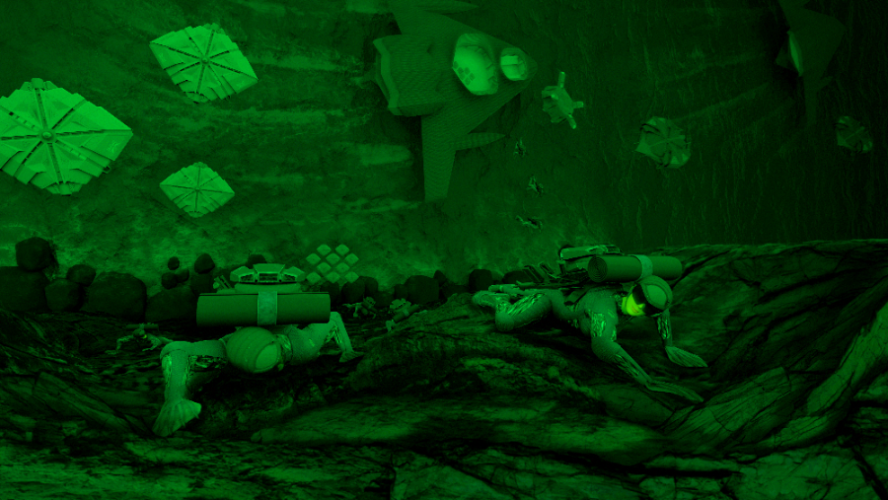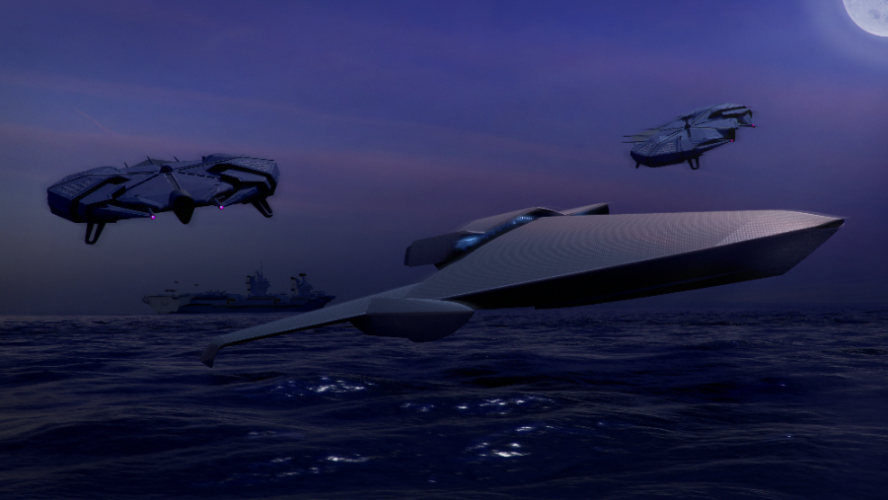The young engineers, from the UK Naval Engineering Science and Technology forum (UKNEST), came up with a range of ideas based on existing and future technology. They were asked to plan a mid-21st Century assault by Royal Marines on an enemy missile site perched on a clifftop, envisioning what equipment might be deployed and how it would be used. A list of the technologies proposed included:
- Exo-skeleton suits covered by a chameleon-like skin allowing wearers to perform super-human feats, such as scaling cliffs effortlessly, and blend with the environment
- Ekranoplan ‘flying wings’ replacing landing craft, silently skimming across the waves at hundreds of miles an hour
- ‘Holographic Marines’ to decoy the enemy
- Helmets with displays providing Marines with the latest intelligence, battlefield info and details of a squad’s health and fitness levels
- Small intelligence drones which feed the latest information direct to commandos’ hi-tech helmets
- Larger ‘grunt’ drones armed with laser guns providing firepower or dropping ammunition, supplies and even small vehicles
- Electromagnetic rail guns on ships firing Marines in special pods to land covertly behind enemy lines
- Boots that harvest energy as the commandos move to power radios and other equipment
- Rucksacks attached using magnets and fitted with energy damping to reduce the burden when marching
- Portable 3D printers producing food in the field
- And sleeping mats which can double up as 80in tactical display screens or solar panels to power hi-tech kit

“The Marines form over 40 per cent of Britain’s special forces and are seen as the tip of the spear,” said Major General Matt Holmes, Commandant General Royal Marines. “Our objective has been to envisage radical capabilities to make us more agile and lethal, while being able to operate in a complex digital and networked future environment.

“We can’t say how much or how quickly the reality of these visions will come to fruition. But what we can say is that if only 20 per cent of these ideas come to reality then we will be at the cutting edge of tomorrow’s technology.”





Report highlights significant impact of manufacturing on UK economy
I am not convinced that the High Value Manufacturing Centres do anything to improve the manufacturing processes - more to help produce products (using...